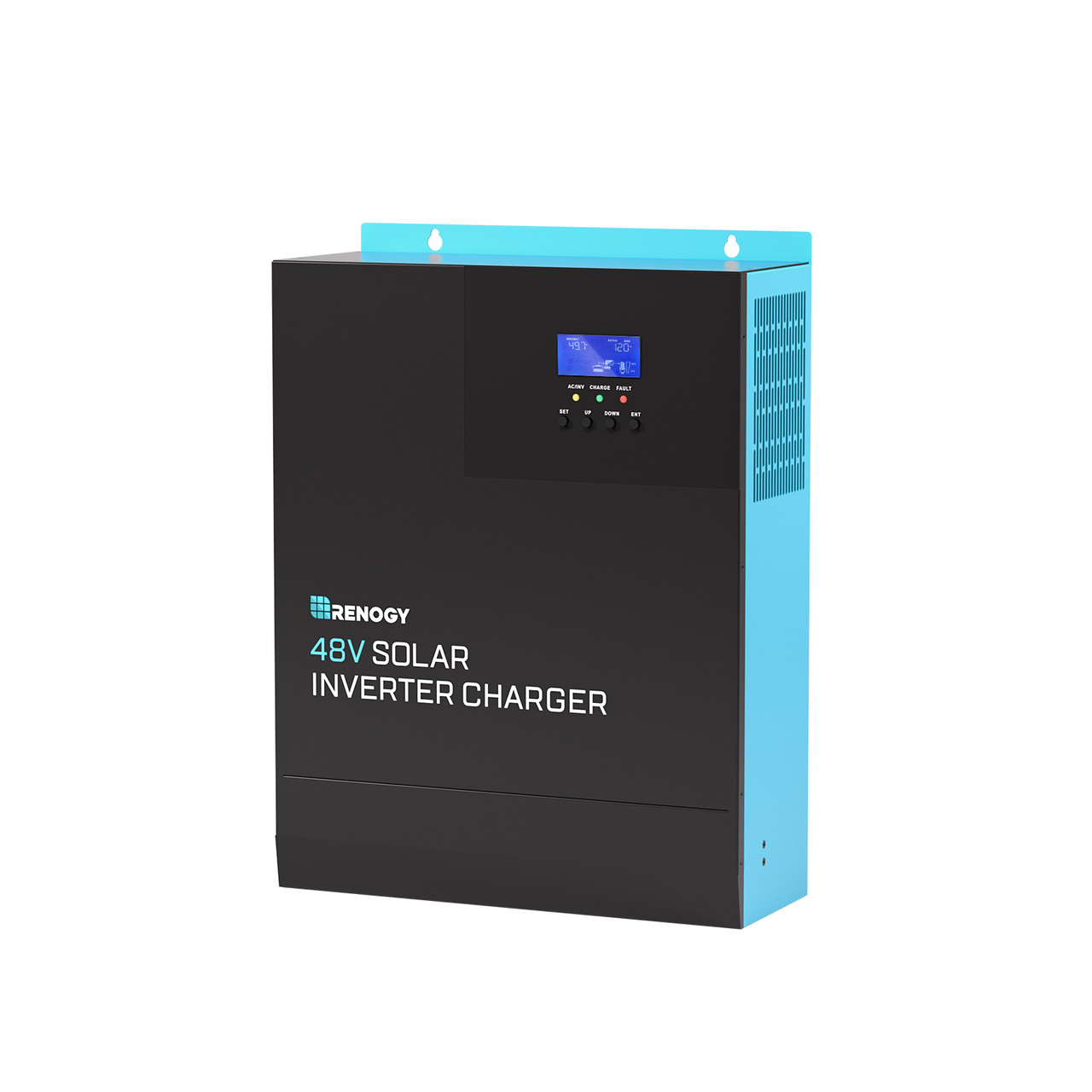Description
Renogy's 3500W 48V Inverter Charger combines AC/generator battery charging and battery inverting into one convenient solution to take your off-grid system to the hybrid level. Compatible with 48V battery banks, this inverter charger gives you the ultimate control with user-configurable AC charging mode and two load output modes that can turn your system into an uninterruptible power supply (UPS). Observe your overall system with the integrated LCD screen, capable of showcasing all input/output system information and identifying any potential errors. This reliable, pure sine wave inverter charger has built-in electronic safeguards to protect you and your system. Equipped with multiple features and modes, the Renogy Inverter Charger is a powerful addition to any 48V system!
If you have any questions regarding this product, please submit a case!
Key Features
- 3500W Pure Sine Wave Inverter Output with 7000W Surge—features user-configurable battery charger (120A max), switchable frequencies (50Hz/60Hz), and an optional power-saving mode.
- Equipped with state of the art MPPT technology, boasting an efficiency of up to 99%, and a powerful bypass function with UPS.
- Preset battery modes for 48V AGM/Sealed, Gel, Flooded, and Lithium batteries. Includes a User mode for custom inputs to work with virtually all battery types.
- 4 Charging Modes: PV Priority, Utility Priority, Hybrid Charging, and Solar Only; 3 Load Output Modes: PV Priority, Utility Priority, and Inverter Only.
- Dynamic LCD and intelligent LEDs provide relevant system information and identify any errors.
- Exhaust ventilation fans allow for excellent heat dissipation, extending the system's life.
- Complete software and hardware protection, including short circuit, over-voltage, overload, and more!
Package Includes
|
48V 3500W INVERTER CHARGER
1 x
|
| AC | |
|---|---|
| Rated Output: 3500W | Power Factor: 1 |
| Input Voltage: 120VAC | Input Voltage Range: 85 ~ 140VAC ± 2% Adjustable |
| Input/Output Frequency: 50/60Hz Adjustable | Output Voltage: 120VAC±5% |
| Output Waveform: Pure Sine Wave | Peak Efficiency: >95% |
| Max AC Charging Current: 30A | Conversion (Bypass and Invert): 10ms typical |
| SOLAR CHARGER | |
|---|---|
| Max PV Input/Output Power: 4400W/4200W | Max PV Charging Current: 80A |
| Max PV Input Voltage: 150V (145V recommended) |
Max PV Input Current: 50A |
| Algorithm: MPPT | MPPT Voltage Range: 60 ~ 115V |
| BATTERY CHARGER | |
|---|---|
| Battery Type: Lead Acid or Lithium | Max Battery Charging Current: 120A (Adjustable) |
| Battery Voltage Range: 40 ~ 60V DC | Voltage: 48V |
| ENVIRONMENTAL/ MECHANICAL | |
|---|---|
| Operating temperature: 5°F ~ 131°F / -15°C ~ 55°C | Storage Temperature: -13°F ~ 140°F / -25°C ~ 60°C |
| Humidity: 5% ~ 95% (3 Layer Paint Protection) | Dimensions: 16.8 x 12.7 x 4.9in / 426 x 322 x 124mm |
| Weight: 23.8lbs / 10.8kg | Certifications: FCC Part 15 Class B, ROHS |
Warranty Information
| Accessories | 1-year material warranty |
























